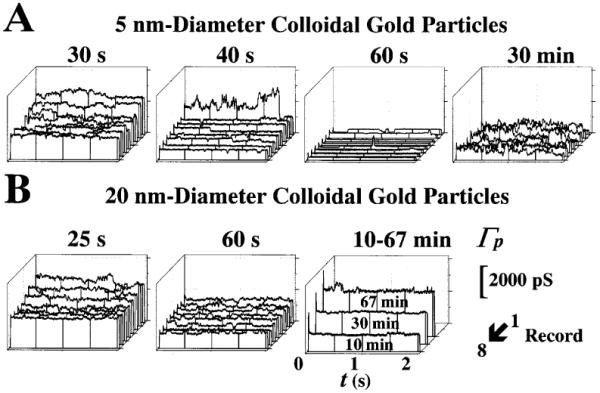Fig. 3.

A,B Modification of NPC gating by colloidal gold particles. A, B Effects of 5- and 20-nm diameter particles, respectively. Time sequences of the effects of colloidal gold on the eight-record ensembles of patch ion conductance, Γp. The records in each ensemble were elicited consecutively, leaving a 300-ms interval during which the nuclear envelope (NE) was held at 0 mV. The time of acquisition (following gigaseal formation) of each ensemble is shown at the top of each panel. Note that Γp is the patch current (Ip), normalized by the applied voltage. Therefore, both Γp and Ip result from the contributions of all the ion-conducting channels present in the patch (the remainder are presumably plugged by translocating macromolecules). The concentration was estimated at 1011 and 105 particles/l for 5- and 20-nm diameter particles, respectively. Higher concentrations caused unstable recordings and damaged the nuclear pore, as suggested by the noisy recordings similar to those made at 30 min in A. Conductance and time calibrations are shown at the bottom-right corner
